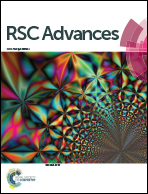Biomimetic thermoplastic polyurethane porous membrane with hierarchical structure accelerates wound healing by enhancing granulation tissue formation and angiogenesis
Abstract
Thermoplastic polyurethane (TPU) is an appropriate material for wound dressings, and has been processed into a variety of forms to match the structural and morphological features required by current clinical demands. The aim of the present work was to manufacture biomimetic porous membranes composed of TPU and investigate the effects on wound healing. The hierarchical thermoplastic polyurethane porous membrane (HTPM) were prepared using a novel, simple and tunable method that combines immersion precipitation with particle leaching. Physical testing indicated that the HTPM possess is more favorable mechanical properties than conventional products, and the inner membrane structure is more similar to that of natural skin. Meanwhile, the HTPM exerted no adverse effects on fibroblast viability and proliferation by a Cell Counting Kit-8 assay. Furthermore, the histological and Western blot results indicated that wound re-epithelialization, granulation tissue formation and angiogenesis were enhanced when skin defects were covered with the HTPM, which significantly accelerated wound healing. These results demonstrated that the bilayer HTPM have therapeutic promise as wound dressings.


 Please wait while we load your content...
Please wait while we load your content...